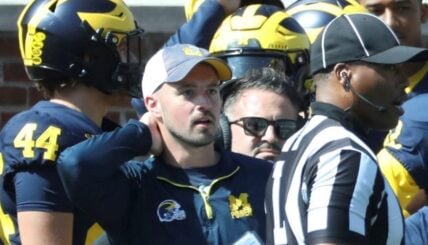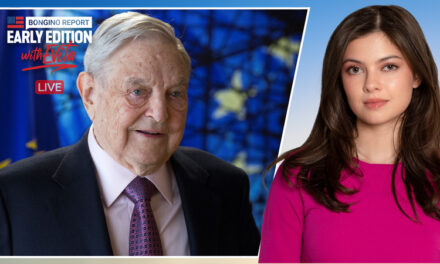We support our Publishers and Content Creators. You can view this story on their website by CLICKING HERE.

The most important takeaway from the debate between Senator JD Vance and Governor Tim Walz is that this is what a serious debate for high office should look like. It was calm but impassioned, thoughtful, and truly helpful to any voter who wants to understand the policy differences between the two tickets. The candidates actually listened to each other, acknowledged some agreements and identified genuine areas of difference. Equally important, each managed to put forward a coherent case for his own ticket, stressing the key issues in their respective campaigns.
Both the tone and substance of the debate was far superior to the two presidential debates. The Trump-Biden debate was the most consequential, of course, because it showed what the White House had hidden for months: the sitting president is saddled with serious cognitive problems. The public concluded he could not serve for another term and might not be fit to serve now. That led to his sharp decline in the polls and gave senior Democrats the leverage to oust him from the race.
The Vice Presidential debate was also superior to Trump’s debate with Kamala Harris, where the former president, irritated by Harris’ attacks, tumbled down the hole of personal attacks and vitriol, losing focus on the policy issues that matter to voters and on which polls show Trump has an advantage.
Tim Walz, who had held no one-on-one interviews during the campaign, used the debate to introduce himself — and did it well. He handled the main task of any vice-presidential candidate: he made a strong, coherent argument for the top of the ticket.
What did Walz’ argument look like? On the positive side, it stressed national abortion rights (pledging to restore Roe), health care, child care, family leave and federal support for housing. He would spend big federal dollars on all of them. He was a strong advocate for Obamacare, though he never used that term, and attacked Trump as a threat to that program and a threat to everyone with pre-existing conditions. (Vance responded effectively but the damage was done.)
Walz continued to paint Harris as an outsider — a major theme in the campaign — with big plans for the future, not as the sitting vice president tied to the failures of an unpopular administration. Vance predictably responded by saying, in effect, “She’s been in office for three and a half years, why hasn’t she done any of these things?”
Walz attacks on the Trump-Vance ticket focused on “tax cuts for the rich” and the danger Trump’s actions on January 6 posed for our democracy. Vance responded that Trump transferred power peacefully on January 20, but he danced around the moderator’s question. He never answered whether he acknowledged that Trump actually lost the 2020 election.
Instead, he said he was focused on the future, not the previous election, an evasion that would have served Trump well in his debate with Harris. Walz made that issue the most powerful part of his concluding remarks. Trump, he said, is a “danger to democracy.” Then he asked “Where is the firewall with Donald Trump?” That question captures the fears of many voters.
Vance also made a strong case for his ticket, stressing the campaign’s central themes, especially the economy and immigration. Like Walz, he did so effectively and without personal invective. The only issue he could have underscored better was his campaign’s theme that the world was much safer under Trump, that it is filled with wars and chaos under Biden-Harris, and that Trump can restore stability and America’s place in the world through strength.
Vance made two overarching points. The first was Trump’s success in raising real wages for everyday Americans and keeping inflation low. He’s done it once, Vance kept saying, and he can do it again. He was particularly strong in stressing Trump’s policies to restore American manufacturing, not imports from countries “that use slave labor.” That policy is essentially high tariffs, which Harris and Walz damn as a tax on all Americans.
The second issue, as you would expect, was Trump’s effectiveness in limiting illegal immigration, a sharp contrast to the failures of Biden-Harris administration. Walz’ response was that everything would have been solved if Trump hadn’t sunk the bipartisan compromise bill in Congress. Vance failed to parry that charge, as he might have, by pointing to the bill’s major defects, the millions who entered illegally before the bill was proposed, and the influx of criminal gangs. He did underscore the surge of fentanyl. Vance concluded the debate by saying the current administration represents “broken leadership” and that “we need change.”
The moderators, CBS’s Norah O’Donnell and Margaret Brennan, deserve a C-, at best. But at least they weren’t as dreadful as ABC’s Linsey Davis and David Muir, who repeated “fact checked” Trump (sometimes erroneously) and let Harris’ mistakes slide. ABC should be credited with an in-kind contribution to the Democratic campaign.
O’Donnell and Brennan made two mistakes, one obvious, one hidden. The obvious one involved their question about Haitian immigrants in Springfield, Ohio. The moderators made a needless point of saying those were “legal” immigrants. (That’s an interesting choice of words since I don’t believe they ever referred to anyone as “illegal,” a verboten word in their rarified world.) Vance tried to intervene to explain why it was misleading to call them “legal.” The moderators were having none of that. They simply refused to let him explain. His attempted comment was brief but the moderators cut off his microphone, inadvertently underscoring a point Vance made later about the danger of censorship by large corporations, often in cooperation with the government.
The less obvious problem was the moderators’ failure to raise what many consider the issue voters care about most: high prices. They limited that discussion to only one issue: housing. They asked nothing about the high prices for food, gas, or other items. Voters complain about them vociferously, attribute the problems to the current administration and say Trump handled inflation far better. Vance wisely raised the issue but the moderators studiously avoided it.
Despite these defects, the debate was a serious one that served the public well. Both Walz and Vance presented their tickets effectively, focused on policy, not personalities, and avoided mudslinging. Their presentations were a much-needed lesson for a deeply divided country. They showed the right way to contest serious differences in a democracy.

 Conservative
Conservative  Search
Search Trending
Trending Current News
Current News 





